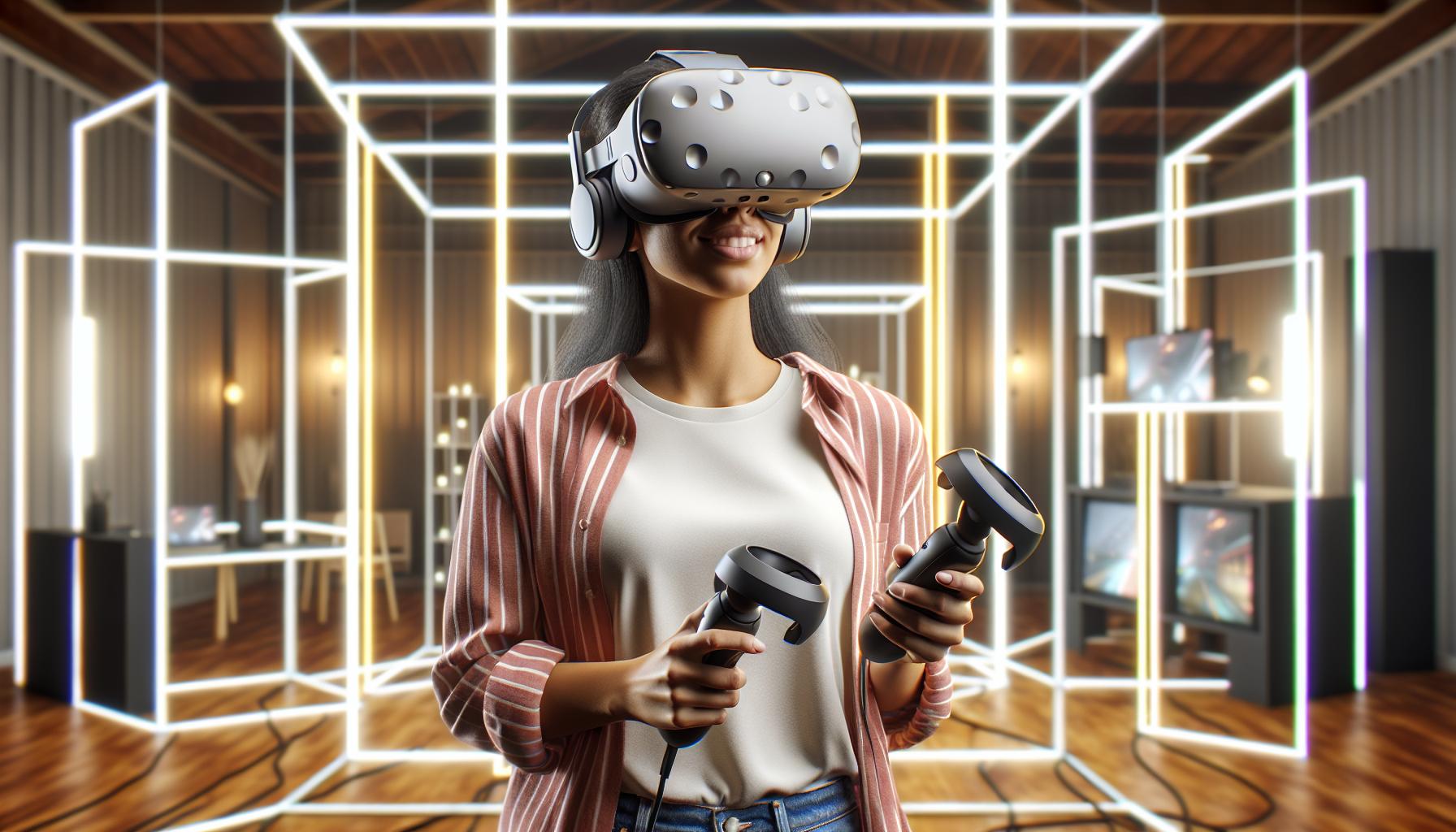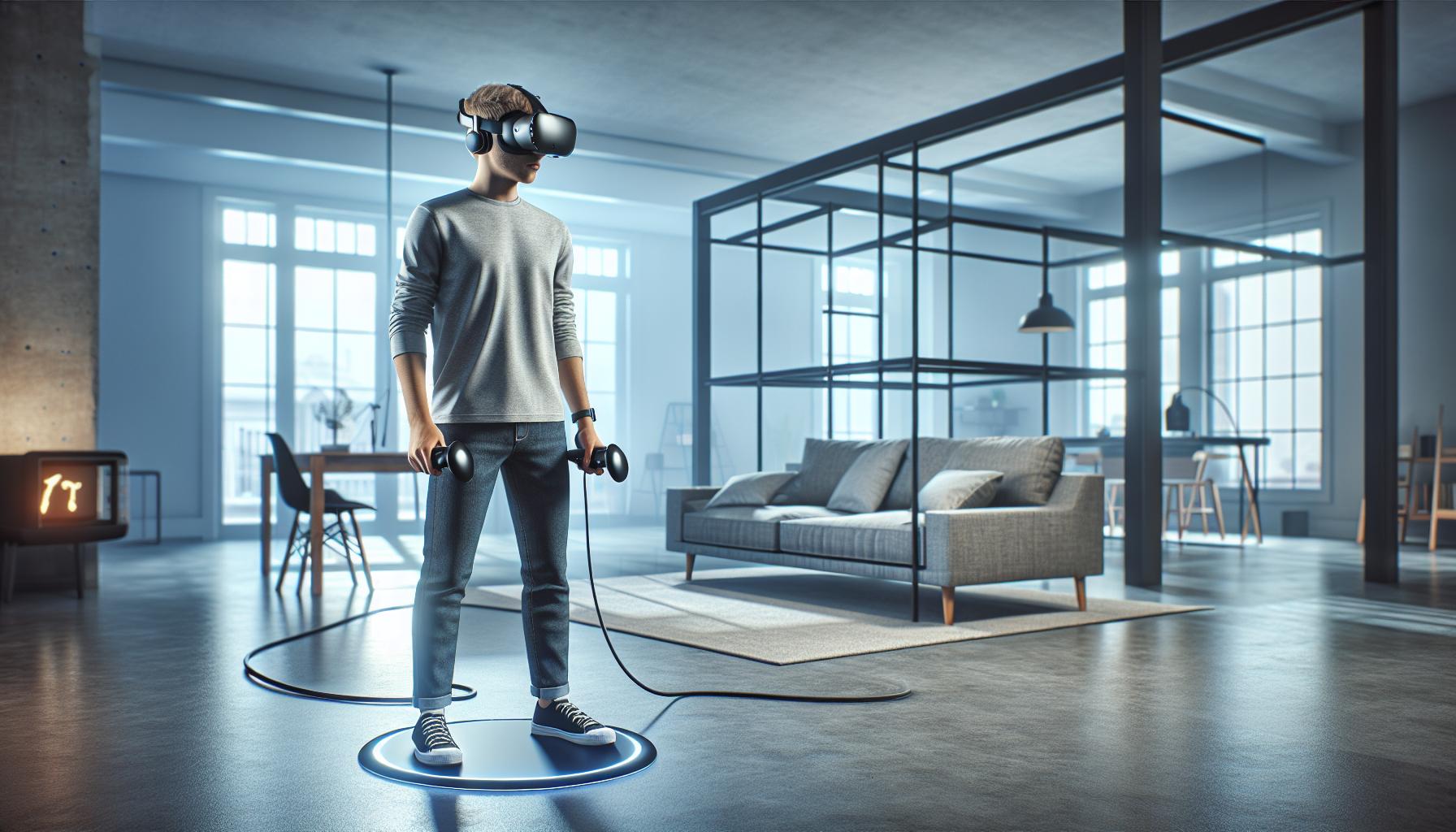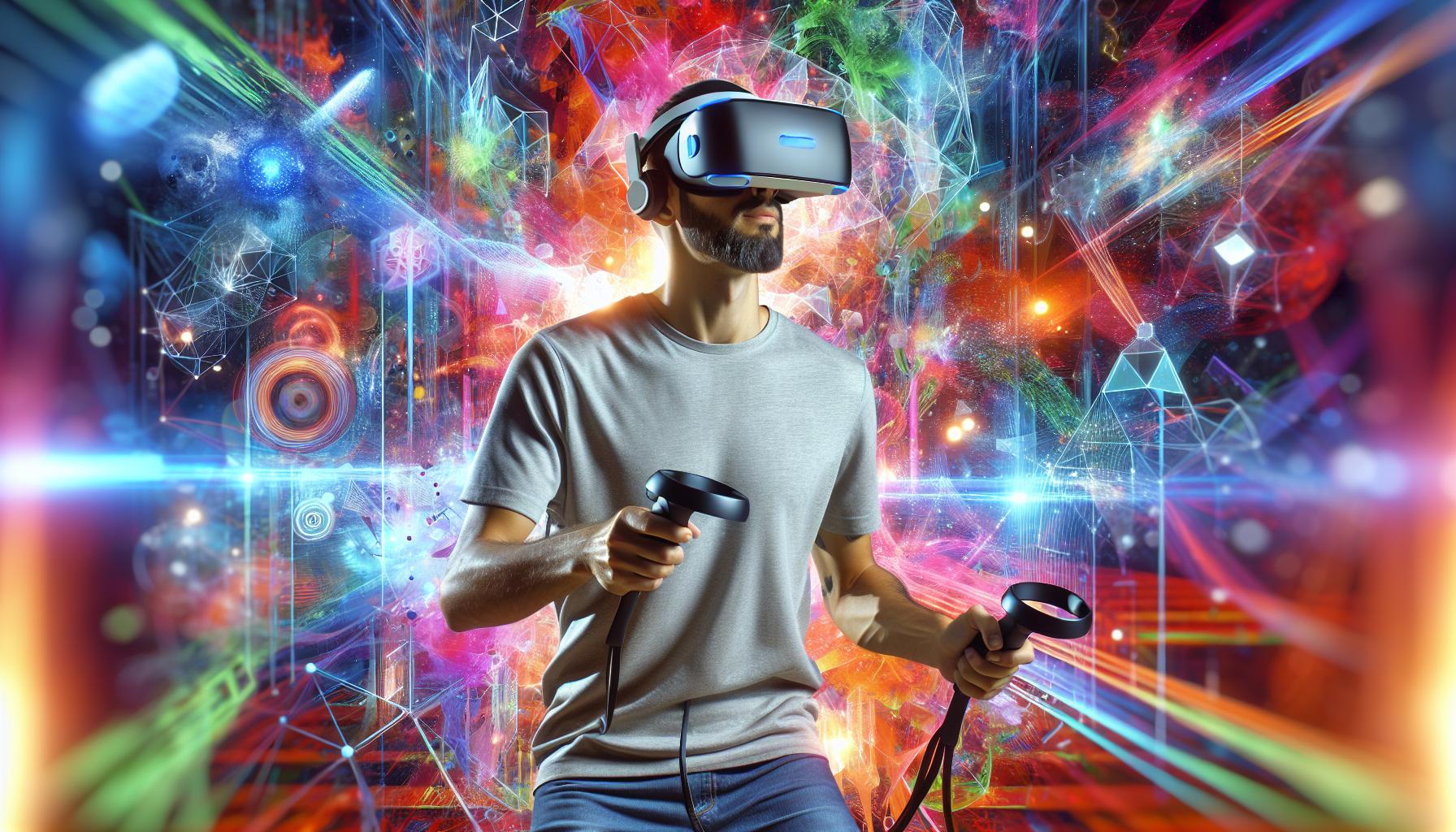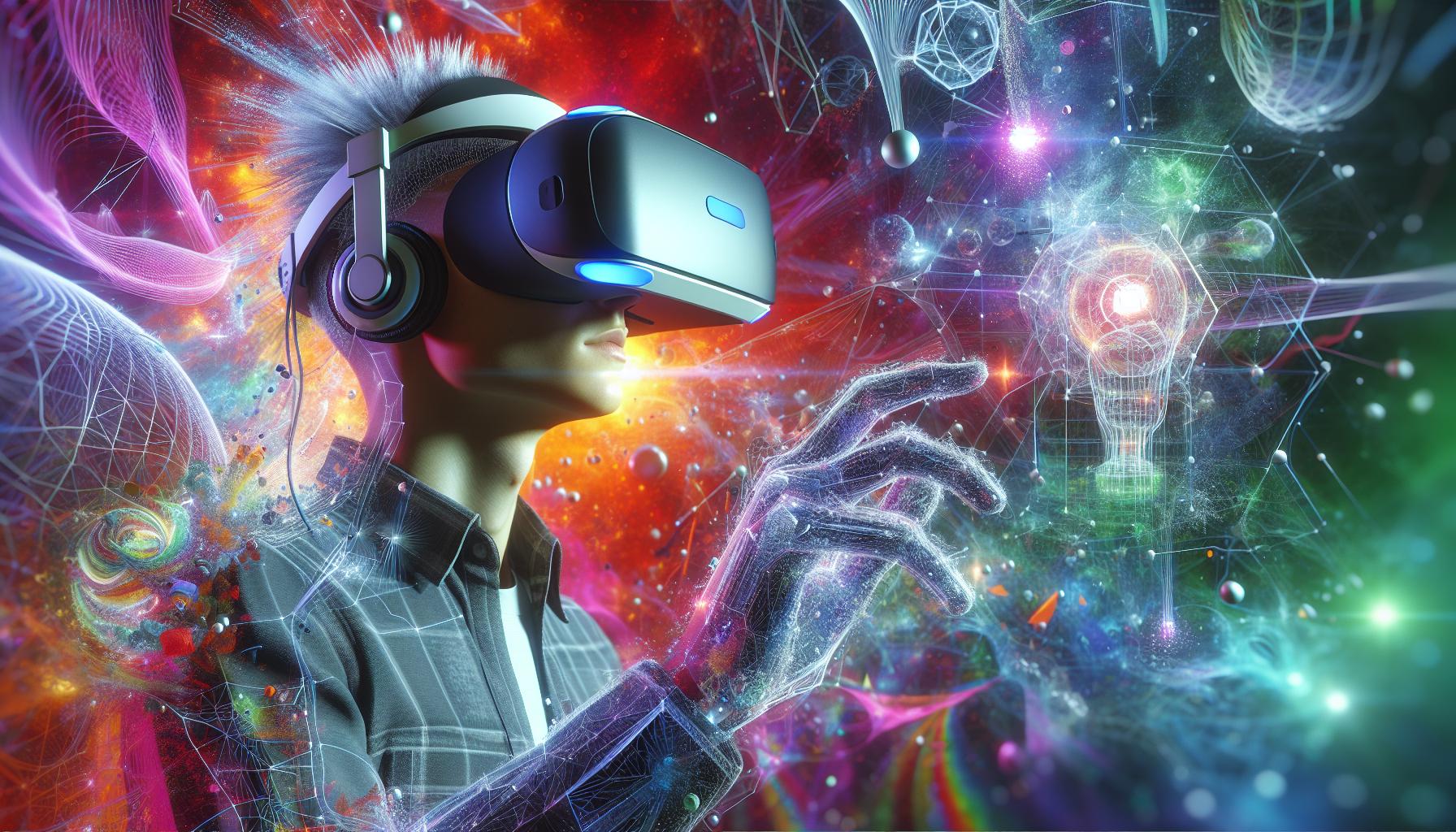
How to Use Virtual Reality: A Beginner’s Guide to VR Setup and Best Practices
Virtual reality has transformed from science fiction fantasy into an accessible technology that’s revolutionizing how people play games work and explore digital worlds. While strapping a screen to your face might seem daunting at first it’s actually pretty straightforward once you know the basics.
Getting started with VR doesn’t require a PhD in computer science or the flexibility of a yoga master. Whether you’re looking to slay dragons explore virtual museums or attend meetings in the metaverse this immersive technology opens up endless possibilities. From standalone headsets to PC-powered systems there’s a VR solution for every budget and technical comfort level.
How to Use Virtual Reality
Virtual reality creates an immersive digital environment that users experience through specialized hardware. This technology generates computer-simulated 3D environments that respond to user movements in real-time.
Key Components of VR Systems
A complete VR system integrates four essential components for immersive experiences. The display unit presents stereoscopic images through high-resolution screens mounted inside the headset. Motion tracking sensors detect head movements using gyroscopes accelerometers for precise positioning. Input devices like handheld controllers enable interaction with virtual objects shapes gestures. The processing unit powers the system calculating graphics rendering physics simulations in real-time. These components work together to create responsive 3D environments with 6 degrees of freedom tracking positional audio spatial mapping.
| Type | Processing Power | Price Range | Key Features |
|---|---|---|---|
| Standalone | Moderate | $299-$499 | Wireless portability built-in tracking |
| Tethered | High | $399-$999 | Premium graphics advanced tracking |
| Mobile | Low | $15-$99 | Basic VR affordable entry point |
Setting Up Your VR Equipment

VR equipment setup requires proper space configuration and device calibration for optimal performance. Following essential setup procedures ensures a safe and immersive virtual reality experience.
Preparing Your Space
A clear play area of 6.5 x 6.5 feet creates an optimal VR environment for most activities. Users remove furniture obstacles tripping hazards from the designated space. Adequate lighting enhances motion tracking sensors while avoiding direct sunlight on VR lenses. Setting physical boundaries through the VR system’s guardian or chaperone feature prevents collisions with walls objects. The room temperature stays between 68-72°F to prevent lens fogging overheating of equipment.
Connecting and Calibrating Your Headset
The VR headset connects to power sources processing units through manufacturer-specific cables ports. Users adjust the interpupillary distance (IPD) slider to match their eye spacing for clear visuals. The head strap tightens at three points: top sides back for balanced weight distribution. Initial calibration includes controller pairing position tracking setup through the VR system’s built-in software. Motion controllers sync with base stations or cameras to establish precise tracking boundaries movement detection.
Basic VR Controls and Navigation

Virtual reality systems use intuitive controls to create immersive interactions within digital environments. Understanding these fundamental controls enables users to navigate virtual spaces effectively.
Hand Controllers and Movement
VR controllers translate physical hand movements into virtual actions through precise motion tracking. The left controller typically manages movement with a thumbstick for walking or teleporting to different locations. The right controller handles direction changes through smooth turning or snap rotation at preset angles. Common movement options include:
- Teleportation: Pointing to a destination spot then pressing the trigger
- Free locomotion: Using thumbsticks for continuous movement
- Room-scale: Physical walking within the designated play area
- Snap turning: Rotating in fixed increments using controller buttons
- Gesture controls: Natural hand movements for specific actions
- Grip buttons: Picking up holding virtual items
- Trigger pulls: Activating selections pointing at objects
- Touch sensors: Detecting finger positions on controller surfaces
- Haptic feedback: Vibrations that simulate object contact
- Hand tracking: Controller-free interaction using finger movements
- Gesture recognition: Programmed movements that trigger specific actions
Best VR Apps and Games for Beginners

Virtual reality offers numerous entry-level applications that introduce users to immersive experiences. These carefully selected apps provide smooth onboarding for newcomers while demonstrating VR’s capabilities.
Free VR Experiences to Start With
Meta’s First Steps serves as an introductory tutorial for Oculus Quest users, teaching basic VR interactions through simple exercises. Google Earth VR lets users explore global landmarks from unique perspectives without cost. The SteamVR Home environment provides a customizable space to practice VR navigation controls. Meta’s Venues offers free social experiences including live events concerts sports broadcasts. Rec Room connects players in a multiplayer environment featuring mini-games painting activities social spaces.
Popular VR Gaming Titles
Beat Saber stands out as a rhythm game where players slice blocks with virtual lightsabers to music beats. Job Simulator places players in comically exaggerated workplace scenarios perfect for learning object interaction. Half-Life: Alyx delivers a premium story-driven experience with intuitive controls scaling difficulty. Superhot VR transforms players into action heroes where time moves only during player movement. Population: One brings battle royale action with climbing flying mechanics suitable for beginners.
| Game Title | Genre | Difficulty Level |
|---|---|---|
| Beat Saber | Rhythm | Easy |
| Job Simulator | Simulation | Easy |
| Half-Life: Alyx | Action-Adventure | Medium |
| Superhot VR | Action | Easy |
| Population: One | Battle Royale | Medium |
Safety Tips and Best Practices
Virtual reality safety combines physical awareness with proper equipment handling to create a secure VR experience. Following established safety protocols prevents injuries while maximizing immersion in virtual environments.
Preventing Motion Sickness
Motion sickness in VR occurs when visual input conflicts with physical sensations. Short sessions of 15-20 minutes help users build tolerance to VR environments. Enabling comfort settings like teleportation movement reduces sensory disconnect. Taking breaks at the first sign of discomfort prevents severe symptoms from developing. Standing still during virtual movement sequences minimizes vestibular confusion. Anti-motion sickness wristbands provide relief for sensitive users. Room temperature ventilation reduces sweating and disorientation. Ginger supplements or candies taken 30 minutes before VR sessions ease nausea symptoms.
Taking Care of Your VR Equipment
Regular maintenance extends VR equipment lifespan and performance. Microfiber cloths clean lenses without scratching the sensitive surfaces. Storage cases protect components from dust damage when not in use. Battery maintenance includes full discharge cycles every 3 months. Controller tracking rings require inspection for cracks or damage before each session. Lens protectors prevent scratches from glasses or debris. Cable management systems prevent wire strain on tethered headsets. Temperature-controlled storage between 60-80°F preserves electronic components. Silica gel packets absorb moisture in storage containers. UV sanitizing devices eliminate bacteria between users.
What Is Virtual Reality and How Does It Work
Virtual reality has evolved into an accessible technology that’s transforming digital interactions across gaming education and professional environments. With proper setup safety measures and regular maintenance users can enjoy immersive experiences while protecting both themselves and their equipment.
Getting started with VR doesn’t require extensive technical knowledge. By following basic guidelines for space setup device calibration and movement controls anyone can step into virtual worlds confidently. As VR technology continues to advance it’s becoming increasingly user-friendly offering experiences suited for every skill level and interest.
Whether for entertainment education or professional use VR opens up possibilities that were once limited to imagination. The future of virtual reality looks promising as more developers create innovative applications and hardware becomes more sophisticated and affordable.
